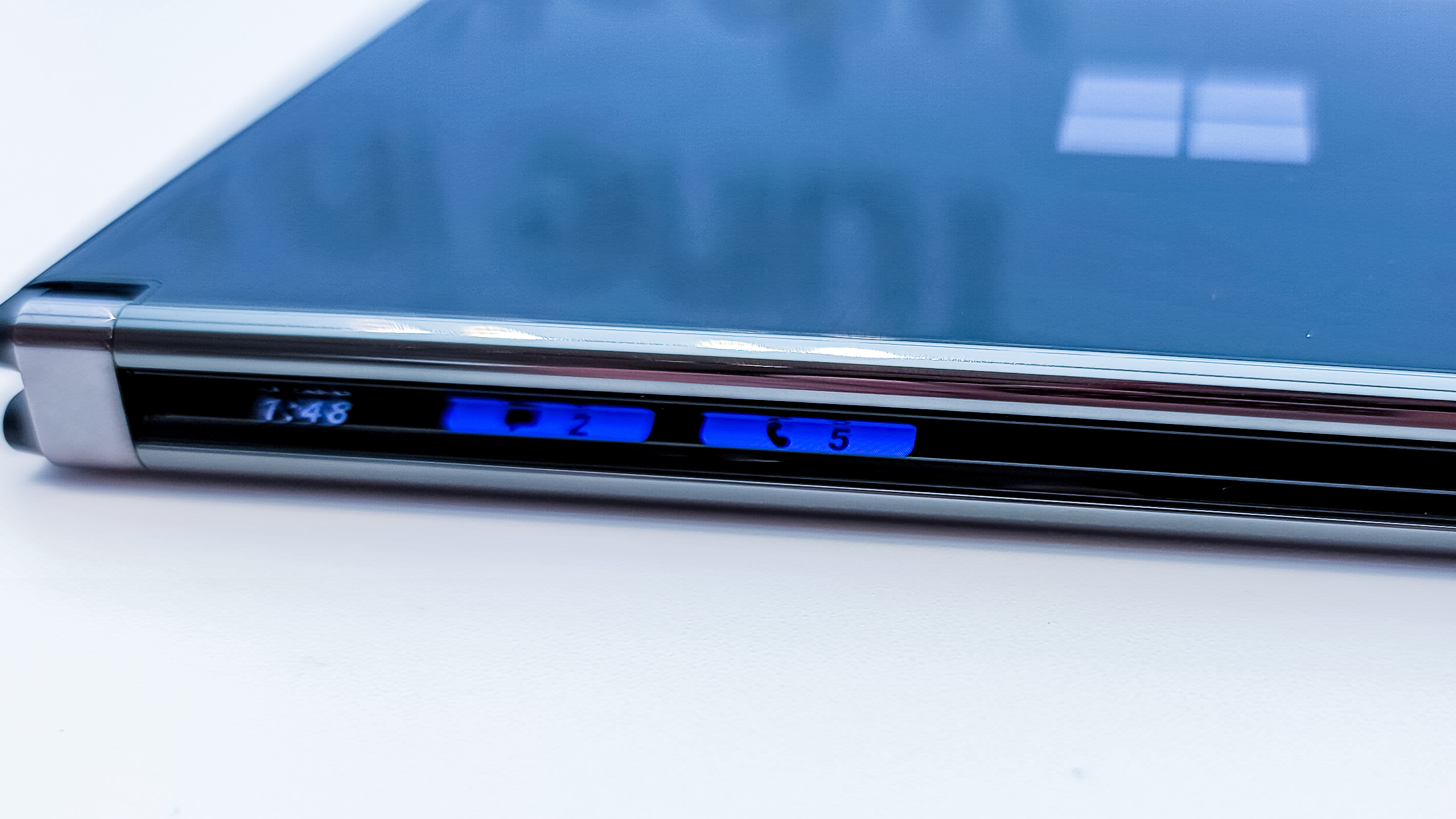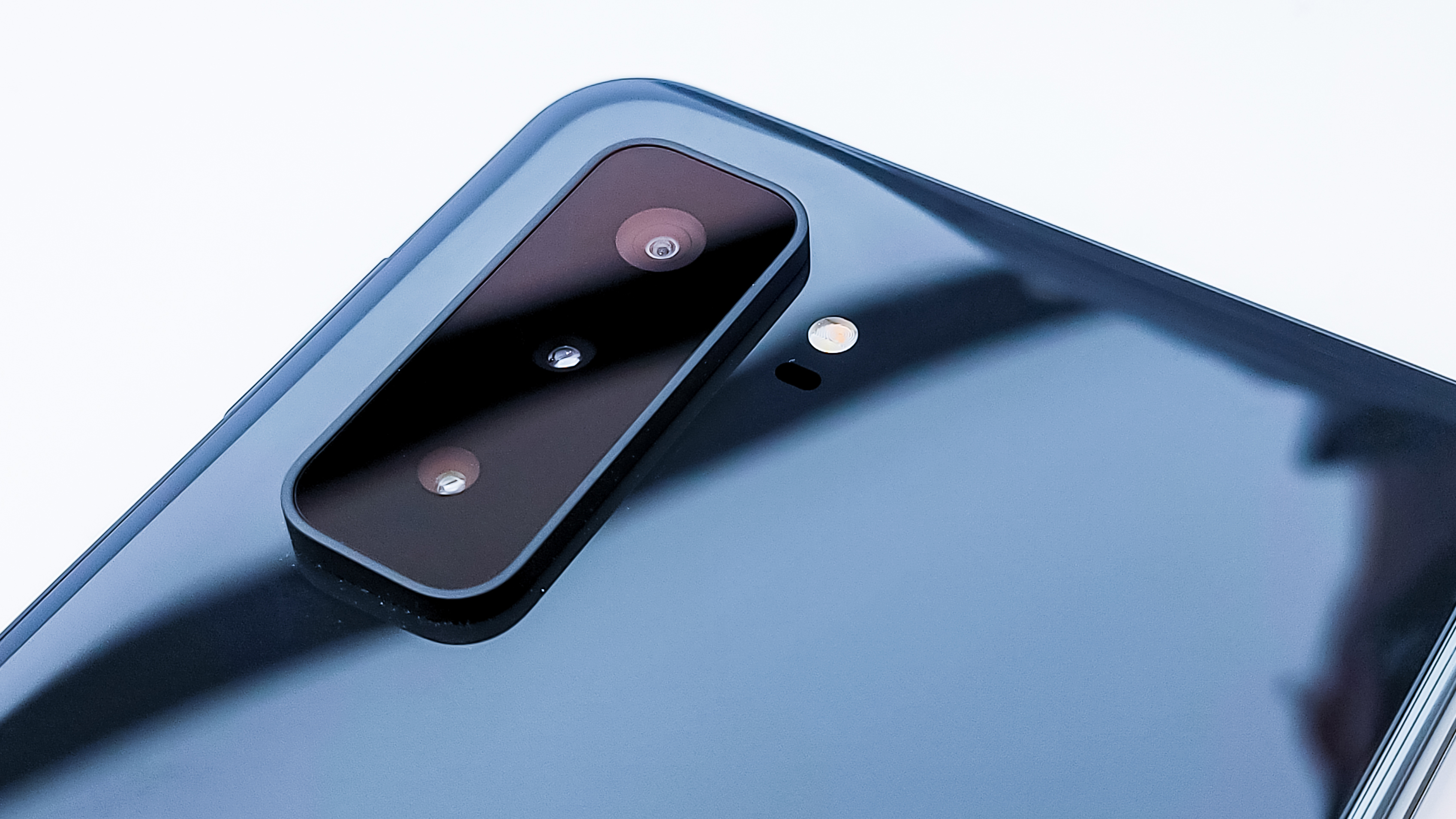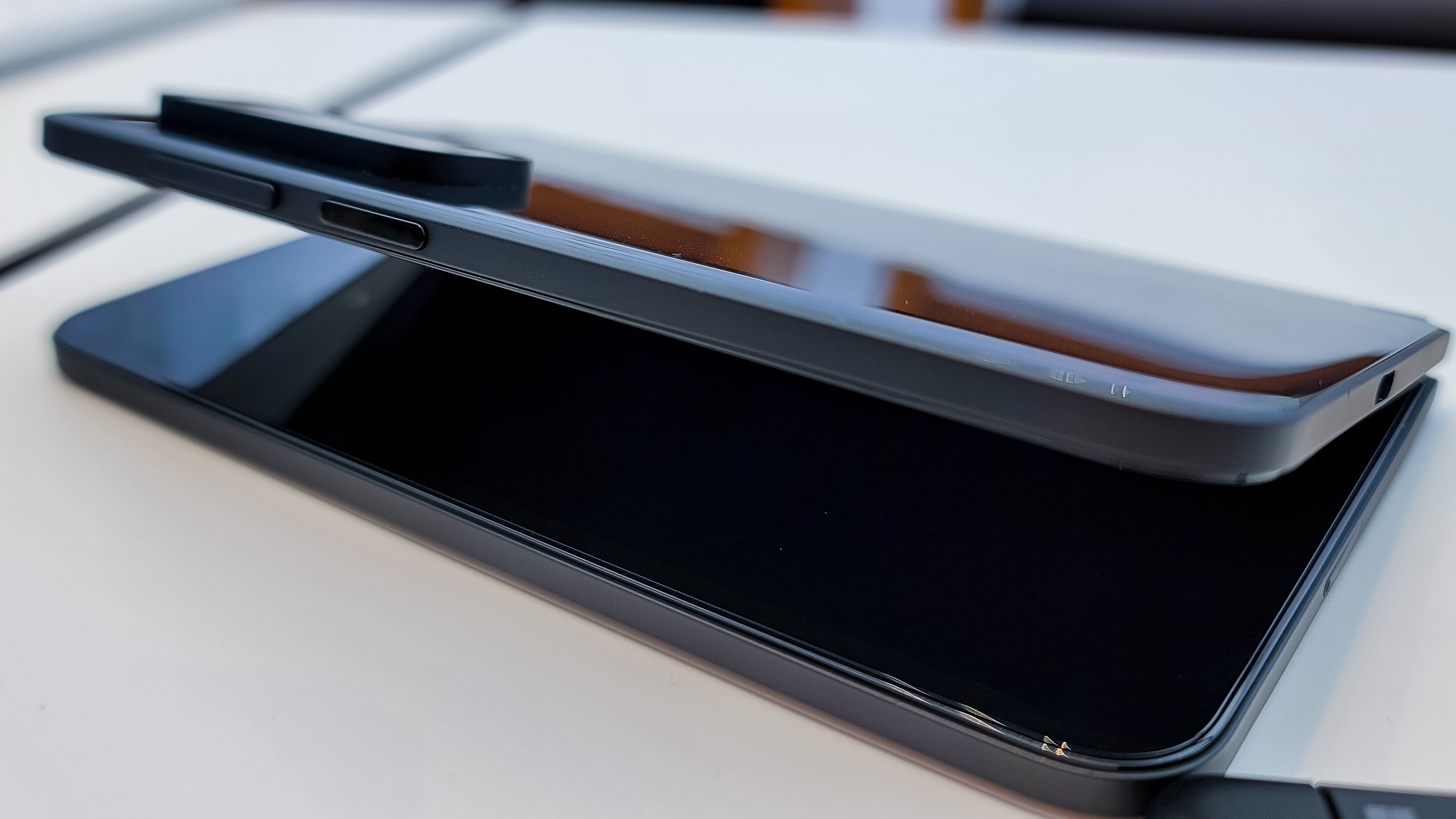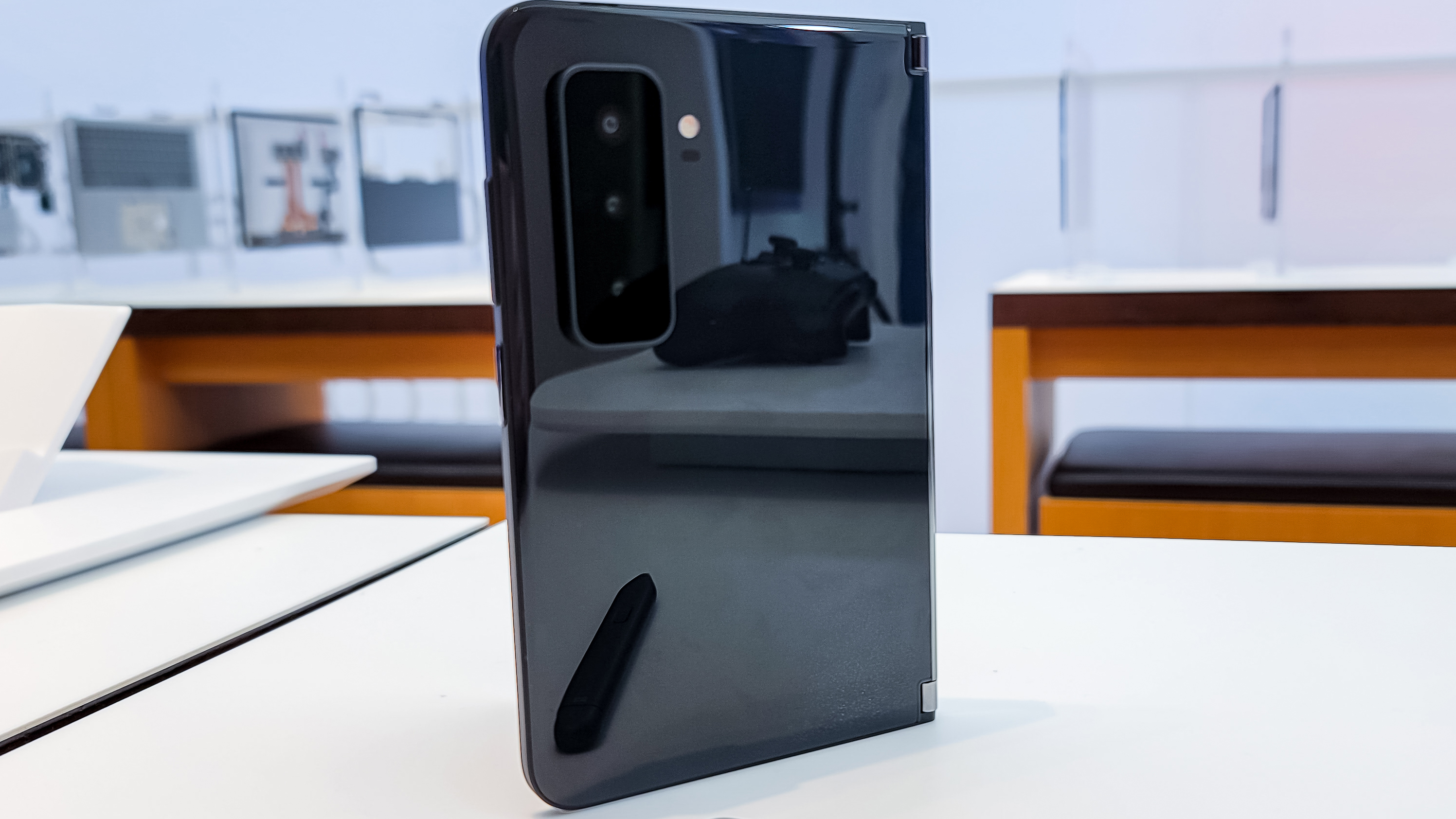Surface Duo 2
The Surface Duo debuted just over a year ago, and was one of the most unique devices in a while, certainly the most adventurous we'd ever seen Microsoft be. But there were a number of issues that stopped the not-a-phone from reaching its true potential. The Surface Duo 2, then, is Microsoft's chance to take the concept to the masses with some much-needed improvements.
Chief among these is hardware that's actually capable of doing the heavy multi-tasking that the Surface Duo 2's form factor requires. This time around, the device is way snappier, avoiding a lot of the slowdowns and freezes we experienced in our time with the original device.
But it's more than just faster hardware. The design has been refined all around, making what was already an elegant piece of hardware into a device that you'll actually want to show off. Plus, there are some major quality-of-life improvements that will make the Surface Duo 2 much more comfortable to use on a day-to-day basis. This is, in so many ways, the device Microsoft should have released in the first place.

Price and availability
The Surface Duo 2 is available for pre-order today, starting at $1,499 (£1,499, around AU$2,000) in "select markets". That means only folks in the US and UK can preorder it now, but if it's anything like the original device, that availability should expand to other territories relatively quickly.
That intro price only includes 128GB of storage, and if you want more you'll have to pay for it. You can upgrade to 256GB of storage for $1,599 / £1,599 or 512GB for $1,799 / £1,799.
This does make the Surface Duo 2 an extremely expensive handset, though. But over the last year or so, especially as foldable phones are becoming more ubiquitous, prices this high don't seem as weird as they once did. In fact, the Samsung Galaxy Z Fold 3 is even more expensive at $1,799 / £1,599 / AU$2,499. Among foldables, then, the price actually starts to seem pretty reasonable, especially with all the improvements Microsoft has brought to the table.

Design
At first glance, the Surface Duo 2 looks very similar to the first one, but with a new colorway. It's still available in the Glacier color that the original Surface Duo had, but this time around Microsoft has included a second option, the beautiful Obsidian. This is a black colorway and it's glossy due to the glass casing, and the Windows logo, which is chrome on the Glacier Surface Duo, is also black, but with a different finish. It's such a better aesthetic for the device, and honestly the one we have our eyes on.
The new colorway getting our attention is appropriate, too, because of just how much has changed with the Surface Duo 2's design. It is basically a new phone, so it feels right for it to look different, too.
The biggest difference, and one that's immediately striking, is the new camera. The Surface Duo 2 has a triple-lens 16mp camera, where the original had just a single lens. This made the first Surface Duo have one of the worst camera's we've used this side of a Nokia flip phone, but it made it to where the device could close flat on top of the camera.
With this new triple-camera setup, however, the Surface Duo 2 has a pretty noticeable camera bump. This means when you close the two screens back-to-back to take a phone call or something, there's a pretty big gap between the two phones. When we saw this, the first thing that sprang to mind was that repeatedly closing the phone like this would either seriously screw up the camera or shatter the glass on the back of right-hand display. Microsoft assures us this won't happen, as the camera bump is recessed slightly under a border that's constructed from plastic and rubber. This means both the camera itself and the glass chassis of the phone should stay scratch free for the life of the device – unless you drop it, of course.
We didn't get a chance to test the camera in our time with the device – we spent much more time with the Surface Laptop Studio than we perhaps should have – but it's pretty much impossible that it won't be miles better than the original device.
Microsoft has also rounded off the edges of the displays, which means there's a bit of display that's visible when the phone is closed. This sounds trivial, but it's extremely useful for notifications. When you have a phone call or a text message coming in, you'll see a strip of lighting on the side of the device indicating that you have a new notification. And if you missed the notifications, as we all do, you can tap the lock button and you'll see a preview of your notifications along the curved edge of the display.
This fixes a huge usability problem for the original Surface Duo, where we would have to open the device to see our notifications and check the time, which is a huge hassle over time.
The displays are also bigger than they were previously, thanks to much smaller bezels. Each display is now up to 5.8 inches, which means you get a huge 8.3 inches of screen real estate in total when the Surface Duo 2 is open in "book mode". The displays each have a resolution of 1,344 x 1,892, which is a combined 2,688 x 1,892 when you're looking at the combined 8.3 inches of the display. It's not quite the 4K of other flagship phones, but it's still a gorgeous display.
Microsoft has included a fingerprint reader again, but this time it actually built it right into the power button, rather than having this weird little segment of the side of the device that reads your finger. It's a small touch, but a big improvement from a usability perspective, means you won't have to move your finger after pushing the lock button. Again, that's not something we were able to test in our time with the device, but something we're looking forward to messing around with when we get the Surface Duo 2 in for a full review.

Performance
While there were a lot of problems with the design of the original Surface Duo, the thing that held it back the most was the internal components of the phone. Microsoft had an incredibly ambitious vision for the device, having it be this champion of multi-tasking, but then included a mid-range mobile chipset and just 6GB of RAM. Microsoft has learned from its mistake.
The internal chipset has been upgraded to the Qualcomm Snapdragon 888, the current top-end chipset from the company, and the memory has been upgraded to 8GB. It's not quite as high as we'd like to push it, something like the 12GB of the Samsung Galaxy Note 20 Ultra 5G would lend itself better to multitasking, but it's still a huge improvement.
We can't run any benchmarks or really spend much time playing games on this device quite yet, but just messing around in Android 11 and launching multiple apps over and over, the Surface Duo 2 is way more responsive than the original – it's really a night and day difference.
After all, Microsoft wants the Surface Duo to be a companion for professionals that need to do work in Microsoft Office while on the move, and the hardware on offer is simply much more capable of doing that. And, with Microsoft's Xbox Cloud Gaming and the ability to turn one of the screens into a controller, the faster silicon couldn't have come at a better time.
We will definitely be putting the Surface Duo 2 through its paces once we get our hands on it. But all the signs are pointing to a much-improved device, and we can't wait to see what it can do.

Early verdict
At first glance, the Microsoft Surface Duo 2 is a huge improvement over the original device. It's faster, has a better camera and brings some important design improvements to the table.
That all comes with a higher asking price, though, which will make it a hard sell for folks that saw all the problems the original device had. For the most part, it seems like the problems have been fixed, but that's not something we can know from 10 minutes of the device.
So the Surface Duo 2 is definitely something you should wait for full reviews of to actually buy, but if the concept of the device piqued your interest before, Microsoft is much closer to fulfilling its promise. And, more than anything, that's pretty exciting.
0 comments:
Post a Comment